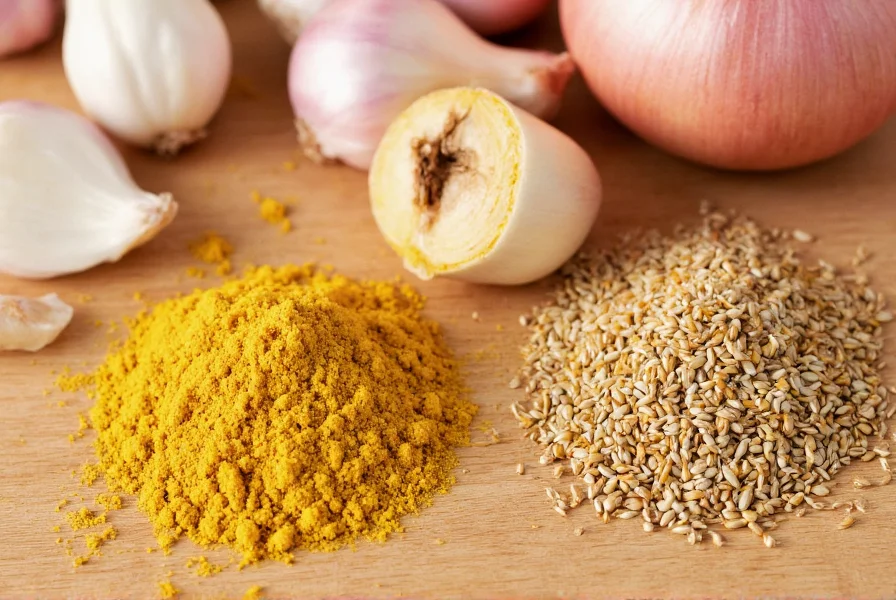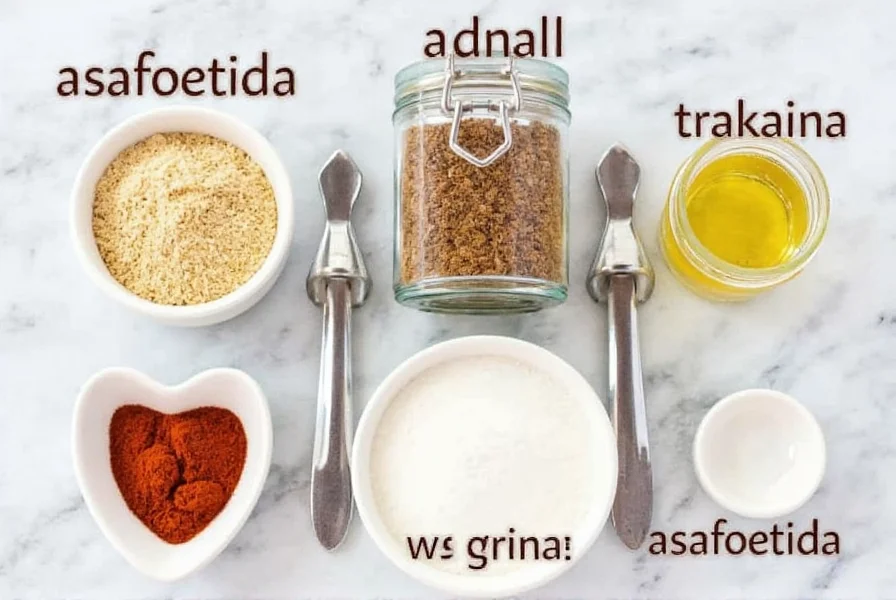The best asafoetida replacements are: 1) A combination of garlic and onion (¼ tsp garlic powder + ¼ tsp onion powder = ⅛ tsp asafoetida), 2) Fenugreek seeds (¼ tsp for ⅛ tsp asafoetida), 3) Onion powder alone (¼ tsp = ⅛ tsp asafoetida), and 4) Garlic powder alone (¼ tsp = ⅛ tsp asafoetida). These substitutions work effectively in Indian cooking when you need a hing alternative for digestive benefits and umami flavor without compromising your dish's authenticity.
Asafoetida, known as hing in Indian cuisine, is a pungent resin prized for its digestive properties and distinctive savory flavor. Many home cooks face challenges finding authentic asafoetida or need alternatives due to dietary restrictions, availability issues, or personal taste preferences. Understanding effective asafoetida replacement options ensures your Indian dishes maintain their traditional character while accommodating modern cooking constraints.
Understanding Asafoetida and Why Substitutions Are Needed
Asafoetida comes from the resin of Ferula plants and contains sulfur compounds that deliver its characteristic aroma. Traditional asafoetida often includes wheat flour as a carrier, making it unsuitable for gluten-free diets. The strong scent mellows during cooking, contributing umami depth to lentils, vegetables, and sauces. When seeking asafoetida substitutes for vegetarian cooking or gluten-free Indian recipes, you need alternatives that provide similar functional benefits without overpowering your dish.

Top Asafoetida Replacement Options Compared
Not all substitutes work equally well across different dishes. The right choice depends on your specific recipe and dietary needs. Here's how the most effective alternatives compare for Indian cooking substitutions:
| Substitute | Ratio (to replace ⅛ tsp asafoetida) | Best For | Limitations |
|---|---|---|---|
| Garlic + Onion Powder | ¼ tsp each | Dals, curries, vegetable dishes | Not suitable for Jain cuisine |
| Fenugreek Seeds | ¼ tsp (tempered in oil) | Sambar, rasam, South Indian dishes | Strong flavor requires careful measurement |
| Onion Powder Alone | ¼ tsp | Gluten-free recipes, Jain cooking | Milder flavor profile |
| Garlic Powder Alone | ¼ tsp | Non-Jain vegetarian dishes | Overpowering if used excessively |
| Amchur (Mango Powder) | ⅛ tsp | Dry spice blends, chaats | Provides tanginess rather than umami |
How to Use Asafoetida Substitutes Effectively
Successful asafoetida replacement requires understanding when and how to incorporate alternatives. For traditional tempering (tadka), add your substitute to hot oil at the same stage you would add asafoetida. The heat releases flavors and integrates them into the dish. When using powder substitutes in cooked dishes, add them early in the cooking process to allow flavors to mellow and blend.
For gluten-free asafoetida substitute needs, verify that commercial alternatives don't contain wheat fillers. Many "hing" products use wheat flour as a carrier, defeating the purpose of substitution for gluten-sensitive individuals. Pure resin asafoetida remains the best option when available, but these alternatives provide practical solutions when it's not.
Recipe-Specific Substitution Guidance
Different Indian dishes require tailored approaches to asafoetida replacement. Understanding these nuances helps maintain authentic flavors:
- Dal Tadka: Use the garlic-onion powder combination for closest flavor profile. Add during tempering with cumin seeds.
- Sambar: Fenugreek seeds work best here. Temper ¼ tsp in oil before adding vegetables.
- Vegetable Curries: Onion powder alone provides subtle depth without overpowering other spices.
- Jain Cuisine: Onion powder is your best bet since garlic and onion are prohibited.
- Gluten-Free Dishes: Verify all spice ingredients, then use onion powder as your primary substitute.

Common Mistakes to Avoid with Asafoetida Substitutes
Many cooks make critical errors when replacing asafoetida that compromise their dishes. Avoid these pitfalls:
- Overcompensating: Don't double substitutes thinking more is better. Start with recommended ratios and adjust in future batches.
- Adding at wrong stage: Like asafoetida, substitutes work best when tempered in hot oil at the beginning of cooking.
- Ignoring regional differences: North Indian dishes often rely more on asafoetida than South Indian recipes, requiring more careful substitution.
- Mixing multiple substitutes: Combining garlic, onion, and fenugreek usually creates flavor confusion rather than enhancement.
Remember that while these asafoetida replacement options work well, they won't perfectly replicate the complex chemistry of authentic hing. The goal is creating delicious dishes that honor culinary traditions while accommodating practical constraints. With practice, you'll develop intuition for which substitute works best for each recipe in your cooking repertoire.
Frequently Asked Questions
Can I skip asafoetida completely in Indian recipes?
Yes, you can omit asafoetida, but your dish will lack its characteristic savory depth and digestive benefits. For authentic flavor in dals and vegetable dishes, using a substitute like onion powder (¼ tsp per ⅛ tsp asafoetida) maintains better flavor balance than skipping it entirely, especially in traditional recipes where hing plays a key role.
What's the best asafoetida substitute for gluten-free cooking?
Onion powder is the most reliable gluten-free asafoetida replacement (use ¼ tsp per ⅛ tsp asafoetida). Many commercial asafoetida products contain wheat flour as a carrier, making them unsuitable for gluten-free diets. Pure resin asafoetida is gluten-free but often hard to find, so onion powder provides a practical alternative that delivers similar savory notes without gluten concerns.
How do I substitute asafoetida in Jain cooking?
For Jain cuisine which prohibits garlic and onion, use ¼ tsp onion powder per ⅛ tsp asafoetida. Some Jain cooks also use a pinch of asafoetida-free spice blends containing amchur (mango powder) and cumin for tanginess. Fenugreek seeds (¼ tsp tempered in oil) work well in South Indian Jain dishes like sambar, providing depth without violating dietary restrictions.
Does asafoetida have any health benefits that substitutes don't provide?
Traditional asafoetida contains compounds that aid digestion and reduce bloating, particularly with lentils and beans. While substitutes like garlic and onion offer their own health benefits, they don't replicate asafoetida's specific digestive properties. For similar digestive benefits, consider adding a pinch of ginger powder along with your substitute, or include digestive spices like cumin and fennel in your tempering process.
Can I use asafoetida paste as a substitute for powder?
Yes, asafoetida paste can substitute for powder at a ratio of ½ tsp paste per ⅛ tsp powder. The paste contains oil or liquid as a carrier, so you'll need more volume to achieve equivalent flavor. Add it during tempering like powder, but reduce other liquids slightly in your recipe to compensate for the added moisture from the paste.










 浙公网安备
33010002000092号
浙公网安备
33010002000092号 浙B2-20120091-4
浙B2-20120091-4